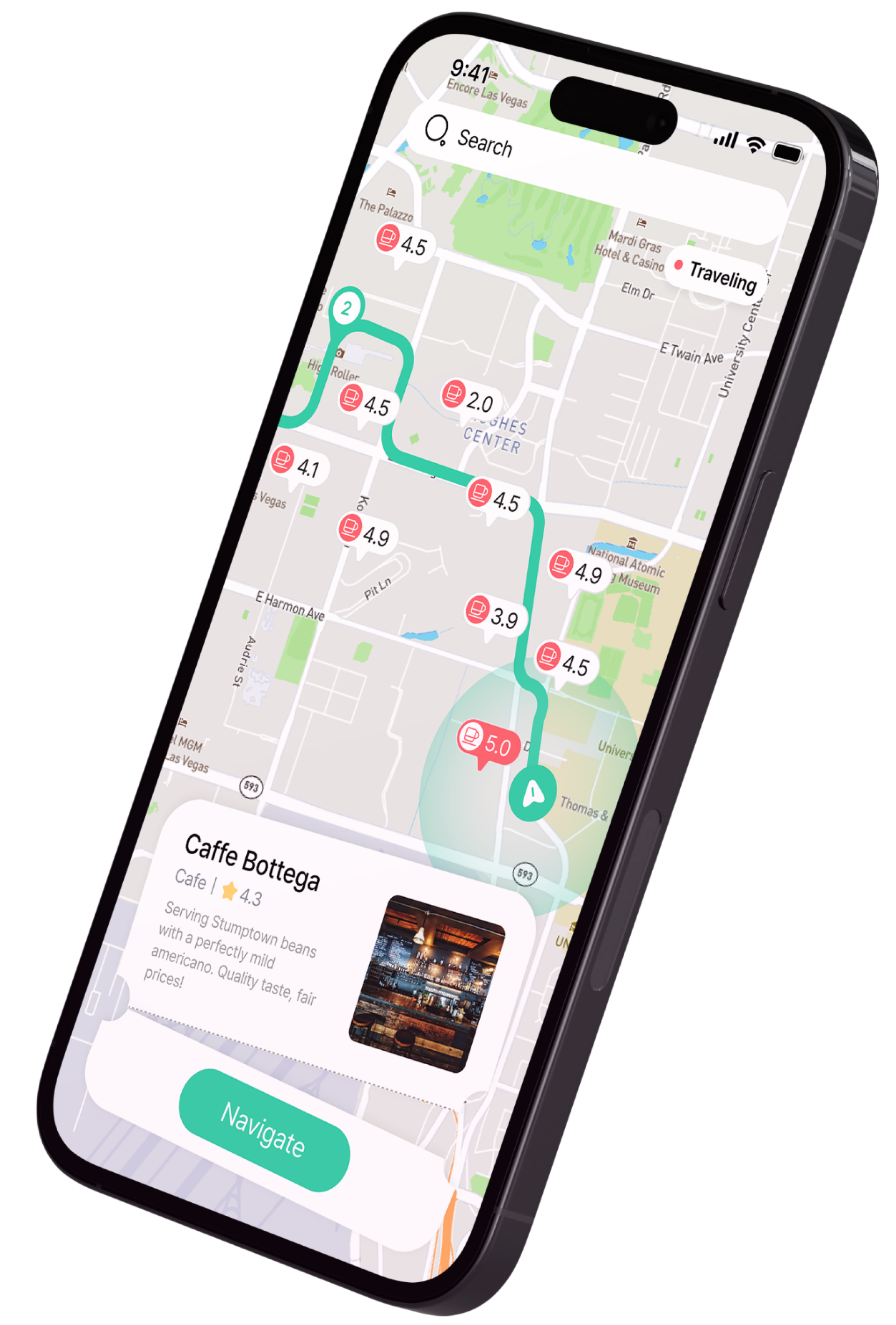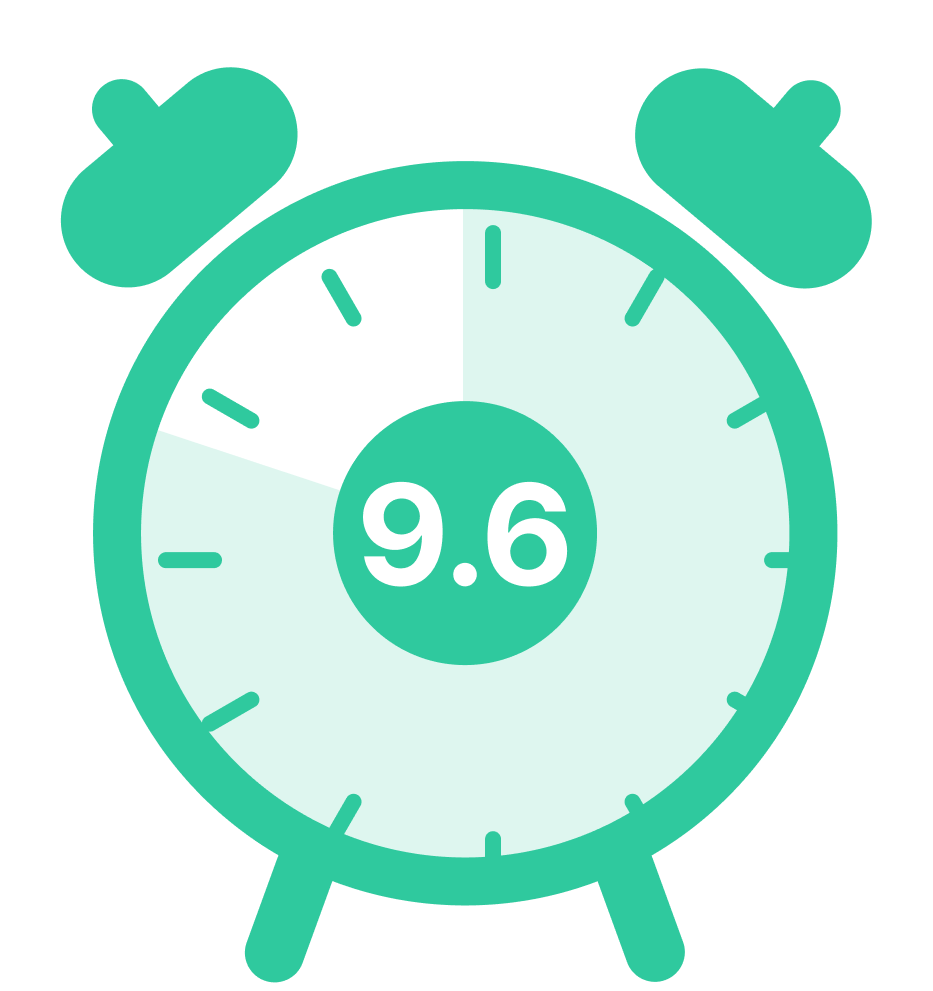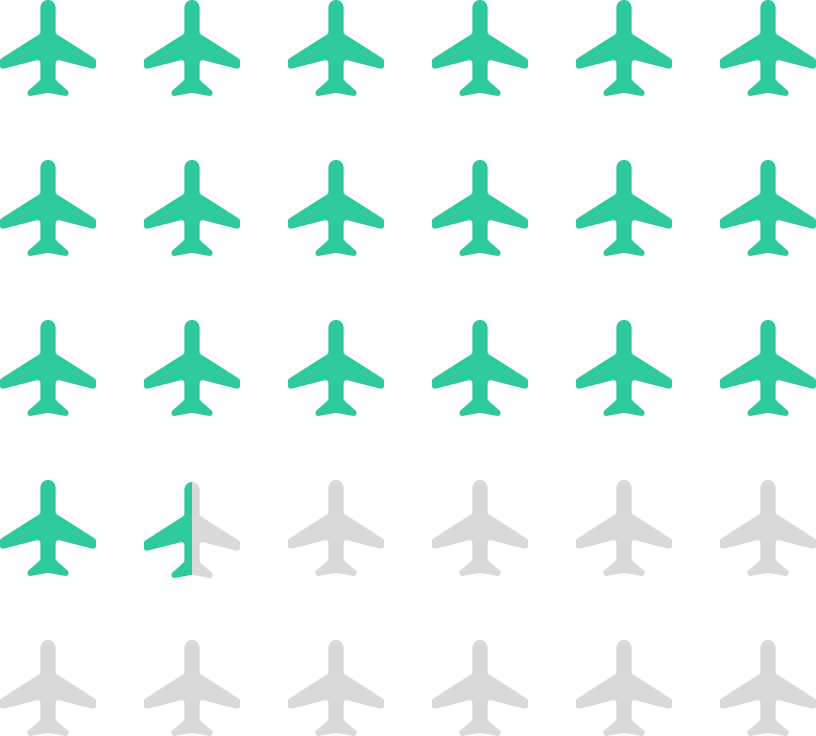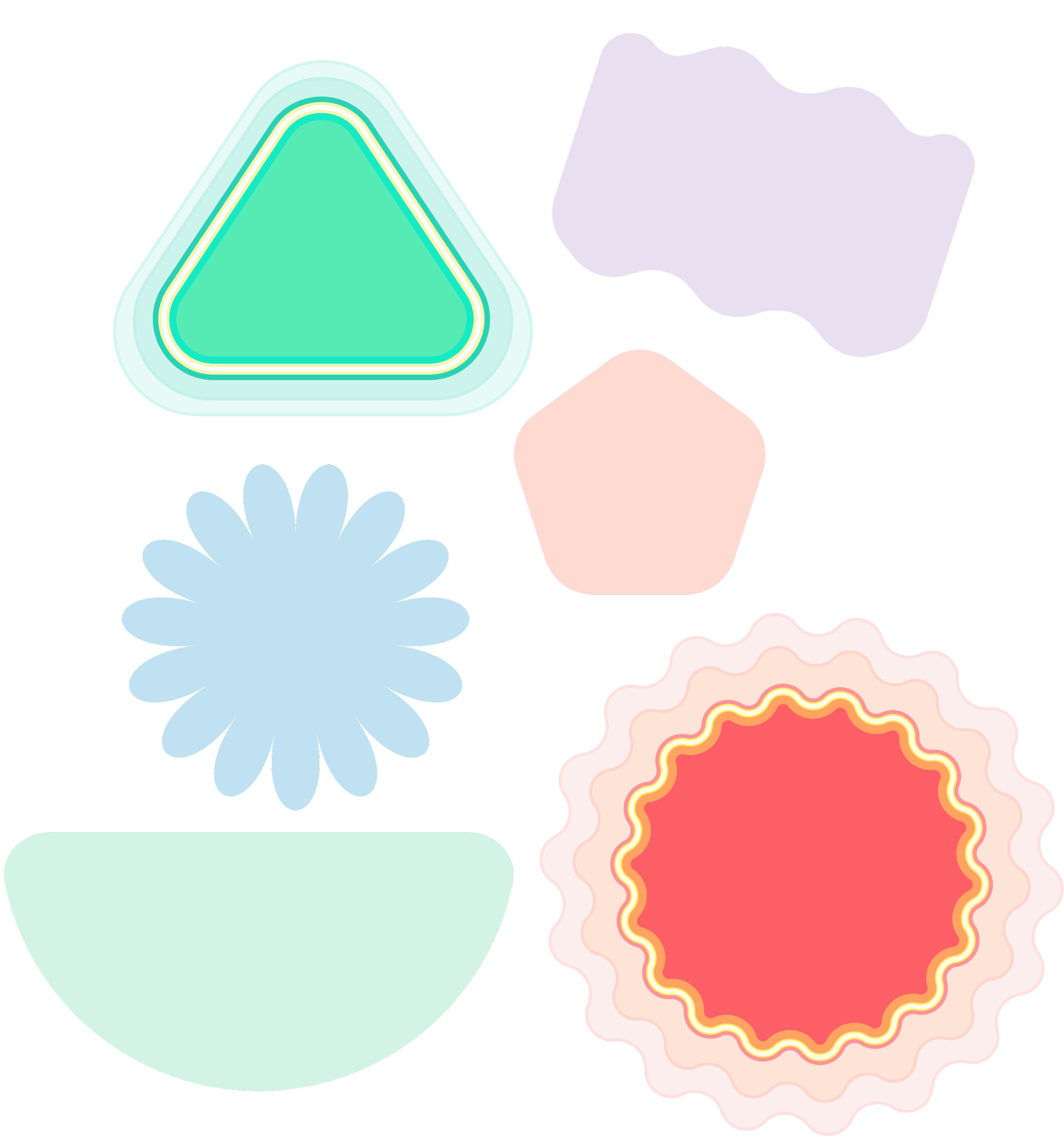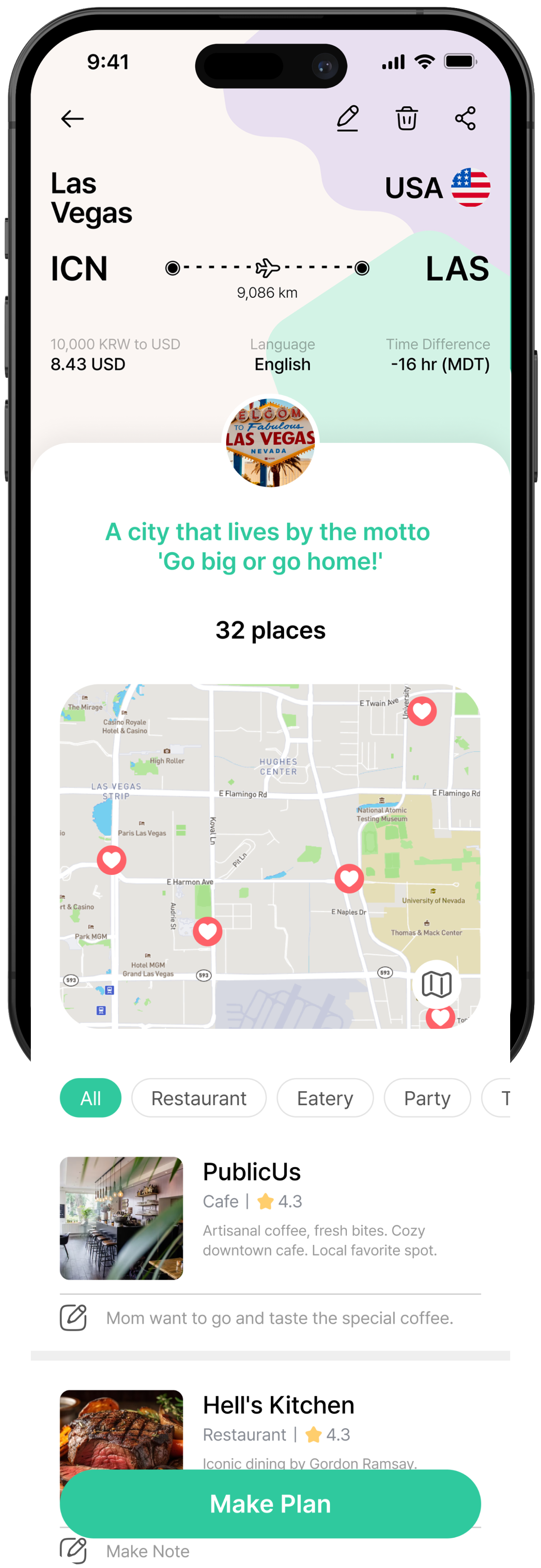UI · UX PROJECT
PathPilot
Are you ready for a perfect adventure?
OVERVIEW
This project goal is to assist busy modern individuals in creating the perfect vacation plan. We employ an easy-to-manage interface design and engaging language to encourage users to have efficient, personal, and flexible travel experience.
PROJECT TYPE
UX · UI
WORK TYPE
Personal Project
ROLE
Researching, Ideating,
Designing, Prototyping
TIME
July - August 2023
(Six weeks)
TOOLS
Figma
Miro
Design Process
Over the course of six weeks, I conducted a comprehensive case study structured around four main stages: Exploring, Understanding, Solving, and Evaluating. I went back and forth with understanding and evaluating in order to get a clear understanding of user needs. After conducting a thorough investigation into user experiences, I obtained valuable insights into the issue and designed a UI solution that effectively addresses the identified problems.
Ideation
EXPLORING
Desk Research
Competitive Analysis
Problem Definition
EXPLORING 01
Desk Research
I conducted desk research to gather data on the issues faced by Korean travelers during the trip planning process. The findings indicate that the average Korean traveler spends approximately 9.6 hours in planning a four-day trip, with nearly 30% dedicating over 15 hours to research. This extensive time commitment often leads to pre-travel exhaustion, highlighting a significant pain point in the travel planning experience.
Korean people spend
9.6 hours to plan a 4-day trip and 3 out of 10 people research for more than 15 hours.
How might we….
create a travel planning solution that offers personalized travel schedules tailored to individual preferences to lighten up the planning process?
63% Individuals
believes that taking more time to plan will lead to better travel experience.
<Source: Expedia>
61% Individuals
say they don't travel because it's hard to find the right trip among so many.
Problem
Korean travelers desire personalized and thoroughly researched travel plans, but extensive planning often leads to information overload and pre-travel exhaustion, causing some to quite the idea of traveling altogether.
EXPLORING 02
Competitive Analysis
During the ideation stage, I conducted a competitive analysis of current AI trip planning services to evaluate the market and enhance ideas. These trip planning applications typically include features for making recommendations, displaying user reviews, and assisting with basic trip organization.
However, I identified significant gaps in personalization and user adaptability. These services, while offering basic customization, could benefit from allowing users more freedom to add attractions and use interactive maps for spontaneous plan changes. Improving these features would significantly elevate the level of personalization and enhance the user experience in AI-based trip planning.
EXPLORING 03
PROBLEM DEFINITION
Which problems are the users facing?
EFFICIENCY
Lack of efficiency due to time-consuming research and information overload
FLEXIBILITY
Lack of flexibility for pre-planned and real-time adjustments
PERSONALIZATION
Restricted personalization method
create an easy travel planner that quickly adapts to personal tastes and changes on the go?
How might we….
UNDERSTANDING
The understanding phase is centered on collecting and analyzing user insights and needs in the context of travel experiences, with the goal of guiding the development of relevant services.
Interviews
Affinity Diagram
Persona
Story Board
UNDERSTANDING 01
User Interview
INTERVIEW
To better understand different travel experiences, I conducted in-depth interviews with four individuals: two who enjoy planning their trips in detail and two who prefer spontaneous travel. Through questions about each stage of their journeys, I gained insights into their unique challenges, thoughts, and behaviors during travel preparation. The interview consisted of four main parts covering travel preferences, experiences, planning habits, and use of existing services.
Duration: 45 minutes
Number: 4 People
Interview Method:
3 people by face-to-face
1 person via Google Meet
Respondents Type:
2 prefer planned travel
2 prefer spontaneous travel
Have you ever faced difficulties when you traveled without plans?
"When do you enjoy the travel planning process the most?
What is most important to you when you are planning?
SPONTANEOUS TRAVELERS
“I read hundreds of blog reviews to ensure each place is enjoyable. “
Planned travelers extensively read through blog reviews to ensure each destination's enjoyment.“I have my plan in Excel or as a Txt file so I can open it easily at the accommodation. “
People who are planning to travel can benefit from more convenient and easily accessible travel planning tools.
MAIN QUESTIONS I ASKED
What is your process when planning a trip?
How long do you plan a 3-night, 4-day trip?
What percentage of your planning involves online resources?
What does your day look like when traveling?
When do you most enjoy during traveling?
KEY INSIGHTS
PLANNERS
“I spent the entire day at a cafe because I did not know what else to do.“
The travelers, lacking sufficient local information, miss opportunities to fully experience their destination.“I wish I could find right spot at that moment“
Users desire the flexibility to explore freely, yet they also value receiving timely and relevant recommendations to enhance their travel experience.
COMMON INSIGHT
Desire for New Experiences and Escapism:
Users seek new experiences and a break from their daily routine during their trips.Travel distance and Transportation Simplicity:
It is important for travelers to minimize travel distance and ensure simple transportation methods.Preference-Aligned Travel Experiences:
Desire for travel experiences that closely align with personal tastes and interests.
UNDERSTANDING 02
Affinity Diagram
I organized and categorized the interview findings using an affinity diagram to better understand the pain points and get key insights. The findings were grouped into four main categories: travel pattern, travel plan, travel service experience, and travel experience. For travel experience, I further broke it down into three subcategories: activities, preferences, and impressions.
COMMON INSIGHT
Importance of Maps and Routes:
Users commonly use maps to determine their routes in the process of travel planning. They often create timetables, noting down places to visit to organize their schedule.Importance of All-in-One System:
Users experience frustration with using multiple sites for different aspects of travel planning, such as booking hotels and tickets and gathering information from tour sites.On-Site Decision Making and Online Research:
Some elements, like dining options, are often decided upon after arriving at the destination. Users rely on online resources such as reviews and photos for on-site decisions.
I conducted a follow-up study with two users who have different travel preferences. Using the think-aloud method, I observed how they interacted with a travel platform for the first time, recording and note-taking their reactions and behaviors as they carried out a scenario.
METHOD
Duration: 30-minute session
Style: Moderated
Types of particimants:
User A: meticulously plans trips
User B: prefers spontaneous travel
USER PAINPOINTS
USER A
(meticulously plans trips)
SCENARIO & TASKS
Imagine you are going on a 3-day trip to Taipei, Taiwan from October 25th to 27th.
Use the TripIt app’s automatic route creation feature for a recommended plan
If you like the recommended plan, save it.
Add your favorite activities and spots to the saved plan for an unforgettable experience.
USER B
(prefers spontaneous travel)
PAIN POINT 1
“They changed my preference keywords.“
Users found that the plan used different keywords than the ones they chose. Even after resetting their preferences, the keywords changed again.It made them think that the service suggested well-known tourist spots instead of creating custom recommendations.
PAIN POINT 2
"Why did it include a station tour? I want to go to places I really want to see."
The user was unhappy because the plan didn't include the places they really wanted to visit. They spent a lot of time on the generating page, trying to make plans with the places. User A ended up deleting the whole plan for the second day and manually created it.
PAIN POINT 3
“Where is the distance and time written?“
The user felt difficulty in finding distances in between the spots.
PAIN POINT 4
"The map doesn't open even when I click on it."
The user thought they could click on the map to see the travel route, but it was just a picture, so they kept clicking on it by mistake.
PAIN POINT 5
“This is far away than I thought….”
The person wanted to figure out if a place they found could be part of their trip and how far away it was. When they clicked on the map, they couldn't see how far the place was until they added it to their plan. So, they had to add and remove places to find activities and locations that worked well and weren't too far.
PAIN POINT 6
“It's too difficult to change the plan.“
User wanted to move a schedule from the morning to the end of their schedule. Not knowing the feature was unavailable, the user had to scroll through the screen repeatedly looking for a duplication feature. The user ended up deleting and then re-adding the spot.
MAIN PAIN POINTS
The TA revealed areas for improvement: significant inflexibility in schedule generating and map interaction, coupled with a lack of clarity in how user preferences are factored in.
EVALUATING
Think Aloud
UNDERSTANDING 03
Persona
To gain a deeper understanding of users' preferences and challenges, I developed personas representing both planners and spontaneous travelers. It is clear that planners and spontaneous travelers have distinct needs: planners seek detailed, reliable information and a structured schedule, while spontaneous travelers value flexibility and real-time updates.
The storyboard revealed critical touchpoints in the user journey, particularly during the initial planning phase, where users feel overwhelmed by options and uncertain about decisions.
The AI travel planning app should offer a customizable interface that caters to both types of users - with features for in-depth planning and flexibility for on-the-spot changes, all while providing a clear, streamlined path through the overwhelming initial stages of planning an international trip.
UNDERSTANDING 04
Story Board
For easier planning, an AI-powered service has been designed to automatically match travelers with destinations they'll love and create the best routes. This service can make the entire planning process straightforward and enjoyable.
Functions
UNDERSTANDING 05
Outcome
Mid-fi Wireframe
SOLVING
After identifying pain points and needs, I extracted functions and based on this, I proceeded to design mid-fi and high-fi using the iOS design system.
High-fi Wireframe
Visual Design
Prototyping
In the mid-fi design phase, I crafted user interfaces that capture the essential elements and functionality of the app, providing a solid foundation for further development and testing.
SOLVING 01
Medium Fidelity
SOLVING 02
Visual Design
COLOR
I've selected emerald as the primary color to encapsulate core values of facilitating personal growth through travel, refreshing experiences, and maintaining a balanced approach to itinerary planning.
2FC99E
D3F3E6
FD5F66
FONT
DESIGN CONCEPT
SOLVING 03
High Fidelity
Select a Travel Plan Generation Method Based on Preferences
Would you like to create a plan out of your saved spots?
Or let AI entirely plan one for you?
Did you have a particular place in mind?
Use your saved locations to make the best travel plan and make sure you don't miss anything!
Make sure this is “Your“ travel!
AI will recommend three plan options. Select your preferred one and easily book hotels and flights. The 'Invite' button lets multiple users modify the schedule together.
Want to see other options?
This page provides detailed info and reviews about places to help travelers make informed decisions. It uses stats from reviews to save time, and AI suggests the best time to visit the place. A pop-up window makes it easy to add or change locations in the plan. Modify your plan at any time by editing, copying, deleting, or rearranging.
Are you traveling?
Need help finding somewhere?
Easily find nearby places along your travel route and adjust your plans with features like viewing nearby places, a location selection tab, and route guidance.
Let’s plan right away!
Choose AI-generated travel keywords! These words are created by analyzing reviews to help you discover your travel preferences.
This project was inspired by my recent challenges in planning a family trip to the USA. Most people enjoy travel, which allowed me to find four enthusiastic individuals willing to share their passion for travel. During the interview, these four unique individuals shared various ways people approach travel planning and their travel patterns. During my conversations with users, I learned that it's important to broaden my perspective and consider their diverse preferences and needs. It became clear that empathetic engagement with users plays a critical role in creating effective design solutions.



